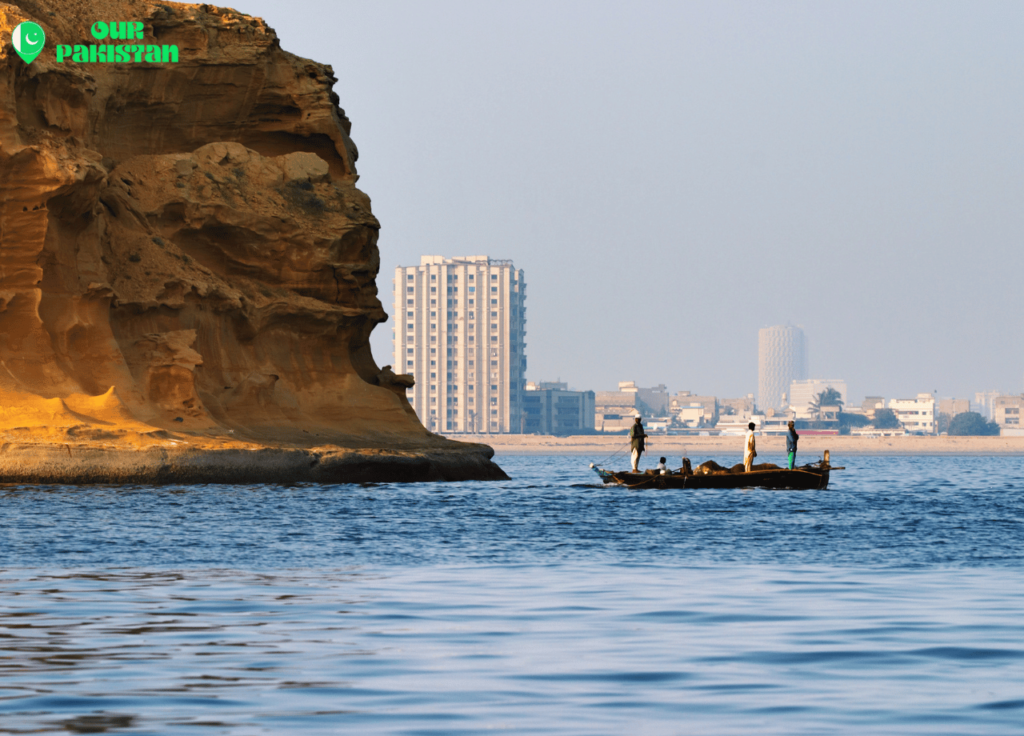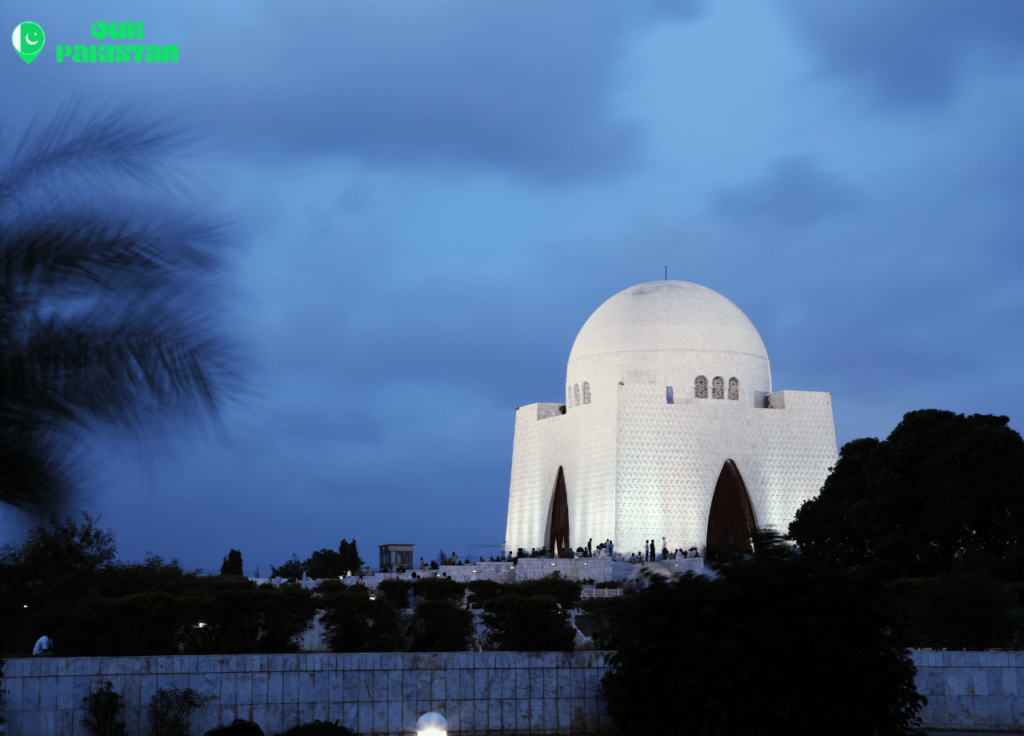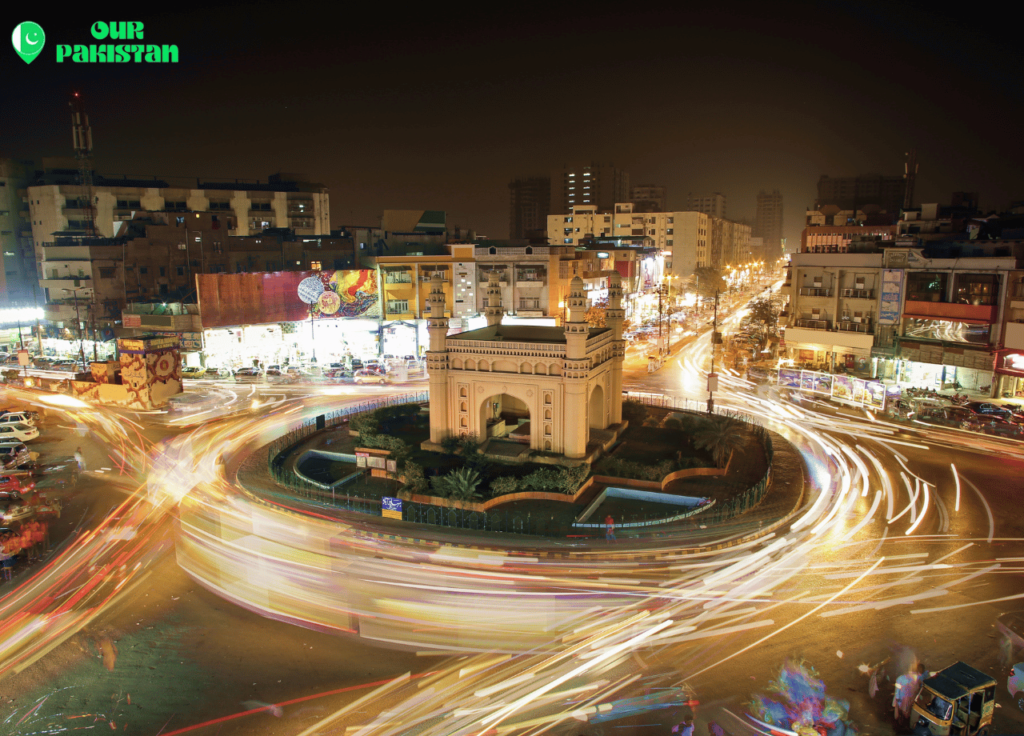Nestled along the coast of the Arabian Sea, Karachi stands as a testament to the resplendent diversity and dynamic spirit of Pakistan. Known for its bustling streets, historic landmarks, and picturesque coastal plains, Karachi is not only a major transport hub but also the heart of Pakistan’s economy and education sectors. The city’s unique position by the sea plays a pivotal role in its climate, with Karachi weather offering mild winters and warm summers, making it an attractive destination year-round. As Pakistan’s largest metropolis, Karachi is a melting pot of cultures, attracting people from across the nation and the globe, making it a rich tapestry of diversity and a bridge to the international market.
This article delves into the multifaceted character of Karachi, exploring its historic significance from ancient times through the British colonial period to its development as a key economic hub. The narrative will unfold the city’s economic landscape, spotlighting major industries, the significance of Karachi port as a pivotal maritime gateway, and the role of multinational corporations. Equally, the cultural vibrancy of Karachi city will be showcased through its ethnic and linguistic diversity, captivating festivals and events, and renowned culinary scene. Additionally, the exploration of Karachi’s landmarks and attractions, such as the storied Quaid-e-Azam’s Mausoleum, picturesque Clifton Beach, grand Mohatta Palace, and the bustling Empress Market, will paint a picture of a city that is steeped in history yet ever-evolving. The narrative will also touch on the challenges Karachi faces, including infrastructure issues, political instability, and environmental concerns, while highlighting efforts towards sustainable development. Through this journey, the article aims to provide a comprehensive overview of Karachi, underlining its importance in Pakistan’s past, present, and future prospects.

History of Karachi
Early History
Karachi’s geographical significance dates back to prehistoric times, evidenced by archaeological findings that link the region to the Indus Valley Civilization, highlighting its role as a natural harbor used by the Sindhi tribes for fishing since ancient times
Kolachi Settlement
The area originally known as Kolachi was a small fishing village founded by the Baloch tribes from Balochistan. It was named after Mai Kolachi, a brave woman from the Kolachi tribe. Over time, this village evolved into the bustling city of Karachi . The transformation from a humble village into a vibrant city began around 1729 under the name “Kolachi-jo-Goth,” and was spurred further by the arrival of Baloch settlers .
British Control
British interest in the region peaked in the 19th century, leading to the conquest of Karachi by the British East India Company in 1839. Charles James Napier’s annexation of Sindh in 1843 marked the beginning of significant urban and economic development in Karachi, establishing it as the capital of Sindh . The city’s infrastructure, including its port and railways, was extensively developed, transforming it into a major gateway to British India .
Post-Independence Developments
Following Pakistan’s independence in 1947, Karachi was selected as the capital city. The city experienced a massive demographic shift as it became a refuge for hundreds of thousands of Muslim immigrants from India. This influx significantly altered the cultural and social landscape of Karachi . In the subsequent decades, despite various challenges, Karachi has continued to grow economically and culturally, retaining its status as a vital economic and educational hub in Pakistan .

Geography and Climate
Physical Geography
Karachi is situated on the southern coast of Pakistan, prominently along a natural harbor on the Arabian Sea, just northwest of the Indus River Delta. The city is built on coastal plains characterized by scattered rocky outcroppings, hills, and coastal marshlands. Notably, coastal mangrove forests thrive in the brackish waters around Karachi Harbour, extending southeast towards the expansive Indus River Delta. West of the city lies Cape Monze, locally known as Ras Muari, an area marked by sea cliffs, rocky sandstone promontories, and undeveloped beaches .
Climate and Weather Patterns
Karachi experiences a semi-arid climate, with influences from the monsoons, positioning it in a unique climatic zone. Despite its tropical location, the city has a moderate climate, which is influenced by its coastal setting on the Arabian Sea. Summers in Karachi are long, starting from March and extending into July, characterized by high temperatures and windy conditions. The hottest months are typically May and June, where temperatures can soar up to 93°F (34°C), occasionally peaking at 105°F (41°C). Conversely, winters are mild and dry, with the coldest months being January and February, during which temperatures can drop to as low as 56°F (13°C). The city receives most of its rainfall during the monsoon season from late June to mid-September, contributing to the overall humidity and altering weather patterns .
Economy and Infrastructure
Karachi, the economic backbone of Pakistan, showcases a diverse industrial landscape driven by major sectors such as automobile manufacturing, steel production, and software development. The city hosts several key players in the automobile industry, including Toyota and Suzuki, which have substantial production capacities of 120,000 and 150,000 vehicles per annum respectively . Additionally, the presence of Pakistan Steel Mills, with a production capacity of up to 5.0 million tonnes, underscores Karachi’s pivotal role in the steel industry .
Finance and Banking
Karachi’s financial ecosystem is robust, featuring a dynamic banking sector that significantly contributes to its economic framework. The Karachi Stock Exchange stands as a vital component, facilitating numerous transactions that drive the national economy forward. This sector’s growth is supported by a variety of banking services ranging from commercial to investment banking, ensuring comprehensive financial services that bolster business and economic development .
Media and Technology
The technological landscape in Karachi is thriving, with a notable expansion in IT and telecommunications. The city is recognized as a significant tech hub, attracting both local and international investments. With over 300,000 IT professionals, Karachi is poised to become a major player on the international tech scene, further supported by government initiatives aimed at transforming Karachi into an innovation hub .

Industrial Sector
Karachi’s industrial domain is extensive, with textiles, pharmaceuticals, and automotive industries playing major roles. The textile industry, in particular, is a cornerstone of Pakistan’s manufacturing sector, contributing significantly to exports and employing a large percentage of the workforce. The automotive sector is also noteworthy, with numerous manufacturing plants bolstering Pakistan’s economic output .
Transportation Systems
The city’s infrastructure is highlighted by significant projects like the Karachi Transportation Improvement Project, aimed at enhancing public transport through developments such as the BRT system. Karachi’s ports, including the Port of Karachi and Port Qasim, are crucial for trade, handling a substantial percentage of Pakistan’s cargo. These developments are integral to maintaining and advancing Karachi’s status as a major transport hub .
Karachi continues to develop its economic and infrastructure sectors, reflecting its critical role in not only Pakistan’s economic landscape but also as a pivotal player in regional and international markets.
Conclusion
Through this detailed exploration, we have traversed the vast and dynamic landscape of Karachi, from its ancient roots and colonial transformations to its present status as a bustling metropolis and economic powerhouse. The journey highlighted Karachi’s pivotal role in shaping not only the economic but also the cultural tapestry of Pakistan, underscored by its significant landmarks, vibrant festivals, and diverse culinary delights. The narrative delved into the challenges faced by the city, including infrastructure woes, political instability, and environmental hurdles, yet also showcased the resilience and efforts towards sustainable development that define Karachi’s spirit.
Looking ahead, the future prospects for Karachi are intertwined with its ability to navigate the complexities of urban development while fostering the economic and cultural diversity that stands as its hallmark. As Karachi continues to evolve, its journey from a quaint fishing village to a key player on the global stage offers insights into the resilience and adaptability of its people and institutions. The essence of Karachi, with its rich history, economic vitality, and cultural vibrancy, remains a beacon of potential, signaling towards a future filled with promise and growth for this critical hub within Pakistan and beyond.
FAQS
Karachi is unique due to its significant role in Pakistan’s economy and transport system. It hosts about 90% of the multinational corporations and all the banks operating in Pakistan. It also features the country’s two largest seaports, Port of Karachi and Port Qasim, along with the busiest airport, Jinnah International Airport
Karachi, Pakistan boasts several famous attractions including the Mazar-e-Quaid, Mohatta Palace, Quaid Azam House Museum, Frere Hall, Karachi Zoo, The National Museum of Pakistan, Zamzama Boulevard and Defense, as well as Sea View and Clifton.
For solo travelers, Clifton Beach and Seaview Park are highly recommended. Clifton Beach, also known as Seaview, is a popular destination not just for its beaches but for the overall scenic environment.